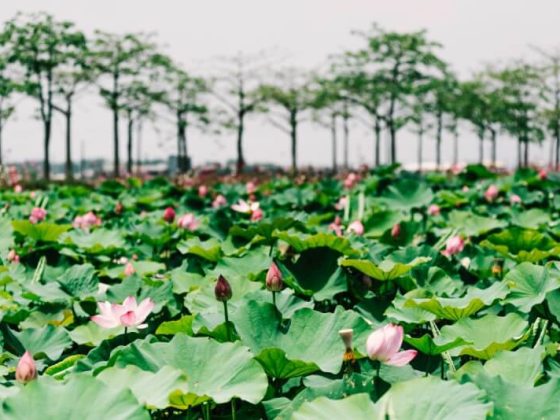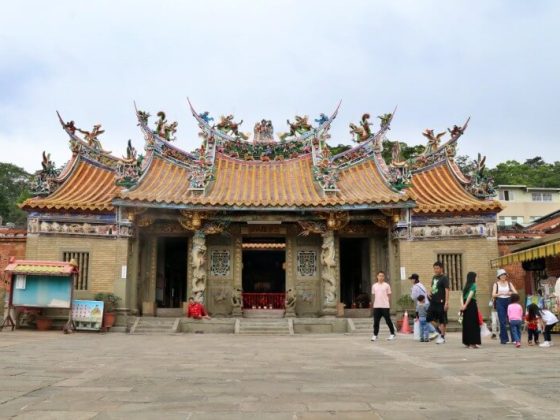Located on the banks of Chiayi’s Niuchou River (牛稠溪), the city of Puzi (朴子) has been a key hub linking coastal and inland regions since ancient times. Daily life in the city revolves around the local center of faith: Peitian Temple (配天宮), which is dedicated to Mazu, the goddess of the sea. Any trip to Puzi will be incomplete without visiting the old temple street and the Puzi Shui DauTou Cultural and Creative Settlement (水道頭文化園區), which was converted from old Japanese dormitories. Stroll idly by, learn about local legends, and feel the warmth of this rustic town. (You might also like: Visit Chiayi: How to Do Xingang)
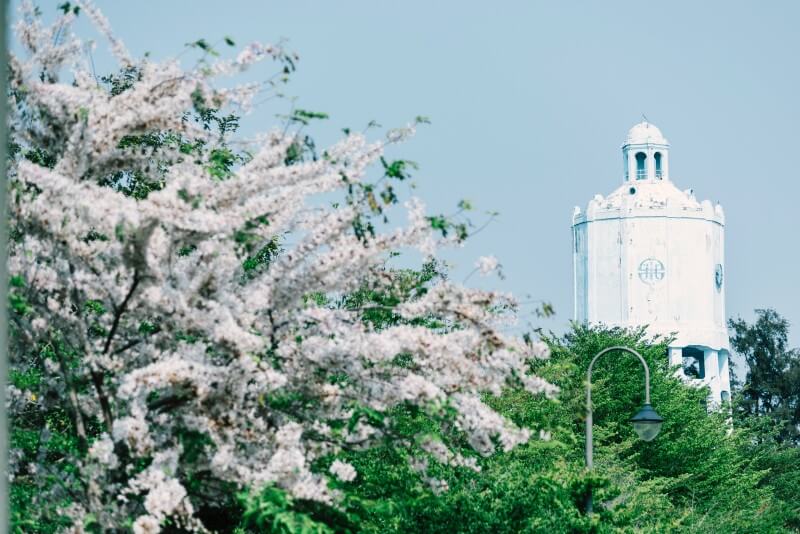
The Mazu Temple Under the Chinese Hackberry Tree is the Starting Point of Your Travels Through Puzi
Following local historian Chen Chen-Keng (陳振耕), we visited one of the oldest Mazu temples in Taiwan: the Peitian Temple. In front of a statue of the goddess Mazu, characteristically in her benevolent composure, Chen told the story of how Mazu chose this place more than 300 years ago and thus began the history of Puzi.
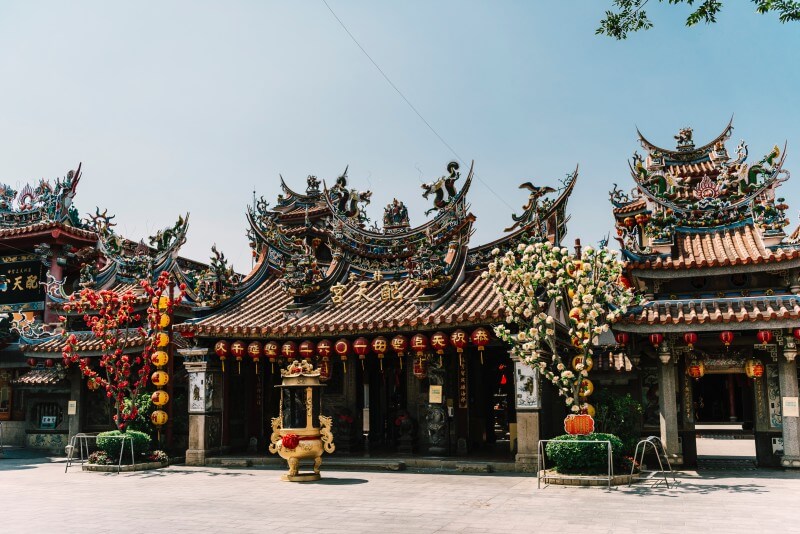
According to legend, during the reign of the Kangxi Emperor in the Qing Dynasty (清康熙年間), a devotee from Budai (布袋), Chiayi went to Fujian (福建) to welcome Goddess Mazu back home to be consecrated and worshipped. After a dangerous trip across the turbulent Taiwan Strait, the party passed through the banks of the Niuchou River, where they found a lush thousand-year-old Chinese Hackberry tree (Celtis sinensis) and decided to rest. Intending to continue on their journey, they suddenly found the sack containing the Maza statue had become so heavy that it could not be moved at all. The local people believed that this was the sign of Mazu wishing to stay here, and so a small temple was built on the site and named Pushu Temple (樸樹宮, “Chinese Hackberry Tree Temple”).
When the number of worshippers grew, the local people decided to renovate the original thatched temple and to communicate with Mazu through worship to ask for approval to cut off the upper half of the thousand-year-old tree as well as the bark of the lower half of the trunk. The trunk was carved into an image of the deity, which is still attached to the roots of the tree underneath and is closely intertwined to the land, becoming what is known locally as the “Immovable Mazu Goddess”. (Read more: 13 Tips for having a deeper Taiwan Temple experience)
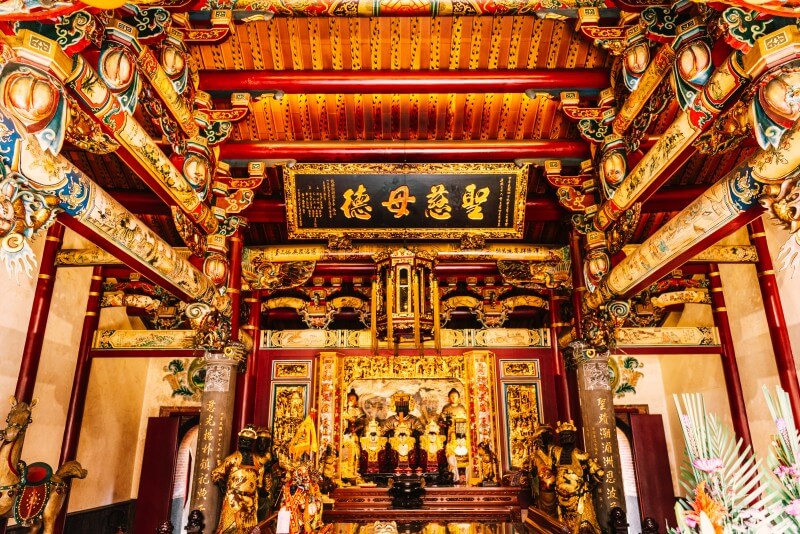
After the temple was expanded, it became a center of worship for the surrounding towns and attracted more businesses to form markets. Gradually, people living in the surrounding coastal settlements started referring to the place as “Pu-Ah-Ka” (樸仔腳, “Under the Chinese Hackberry Tree” in Taiwanese), which gradually evolved into a place name, and was later changed to “Puzi” during the Japanese rule and is still used to this day.
Lanterns Signify Prosperity, Embroidery Testifies to Tradition and Heritage
The temple was changed to its present-day name, “Peitian Temple”, because of the famous Qing-era general Wang Delu (王得祿), who was born in Chiayi. Legend has it that the Emperor Jiaqing invited Wang Delu and his brother and sister-in-law to the capital every year to enjoy the lanterns on the Lantern Festival, but as his brother and sister-in-law were too old to travel, the Emperor gave Wang Delu permission to decorate his home with lanterns, which were only available in the imperial palace at the time. Later on, Wang Delu requested that the lanterns be placed at the nearby Pushu Temple, which became the earliest Lantern Festival in Taiwan, and the temple was renamed the Peitian Temple (“Matching Heaven Temple”) by the emperor.
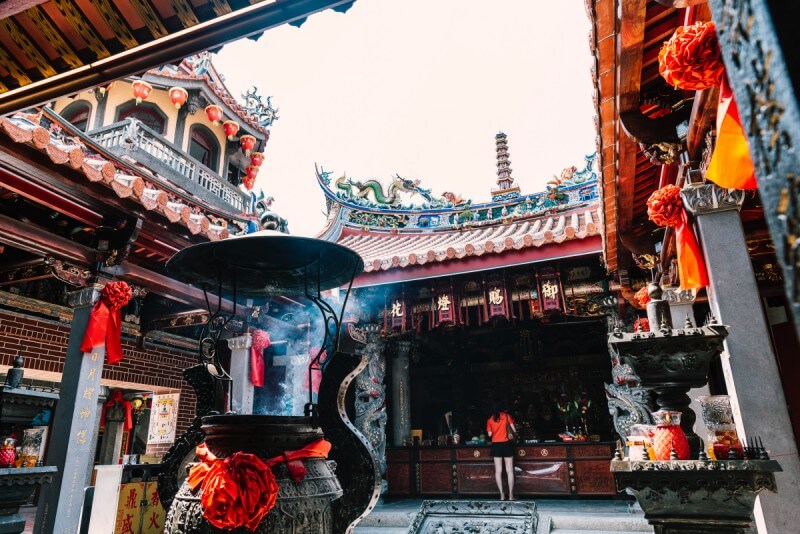
The convergence of worshippers at the Peitian Temple, together with the tradition of lighting lanterns that has been carried on since the Qing Dynasty, made Puzi one of the most prosperous settlements along the Chiayi coast in the past. Embroidery, one of the religious folk arts that are inseparable from the practice of folklore, was an industry that flourished at the time in the city.
The elaborate embroidery made by artisans in Puzi is used to make religious fabrics such as shrine garments, with the bright colors and distinct patterns of the embroidery enriching the lives of the local people. Local artist Wu Mei-ling (吳梅嶺), who was born in Puzi, also promoted embroidery at the Puzi Girls School during the Japanese era, thus bringing embroidery arts into the lives of the local people. (You might also like: From Fingertips to Paper: Papercraft Artist Johan Cheng Cuts a Slice of Life’s Most Beautiful Moments)
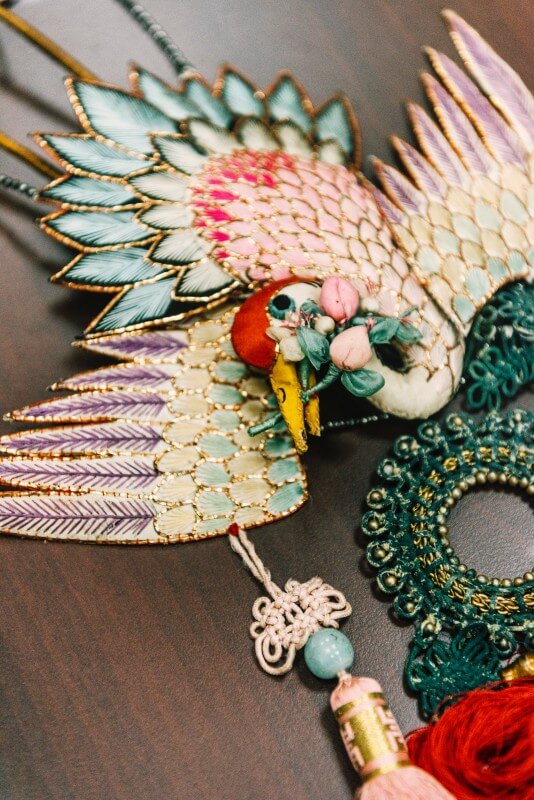
Despite the gradual decline of handcrafted embroidery, the magnificent art can still be seen when you step into the Puzi’s Embroidery Culture Exhibition Hall (朴子刺繡文化館), which was converted from a Japanese dormitory, where Puzi’s well-preserved embroideries are housed and embroidery classes are offered for interested visitors to experience the culture and tradition of the craft.
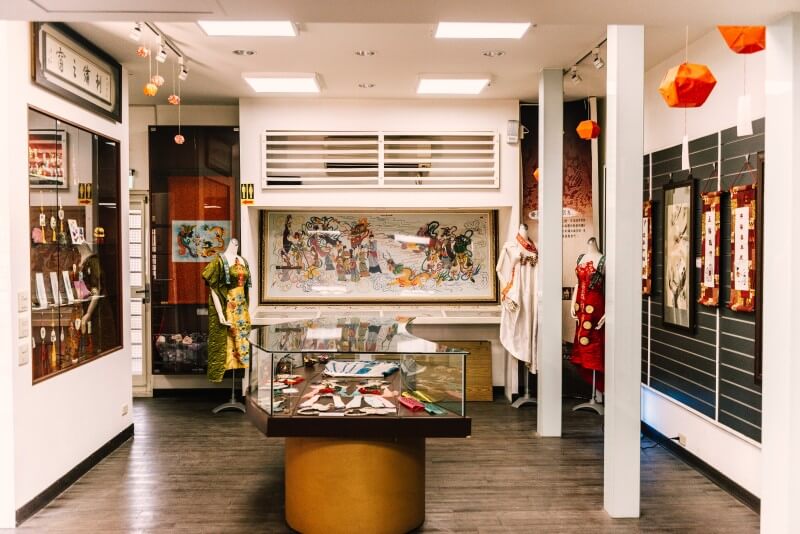
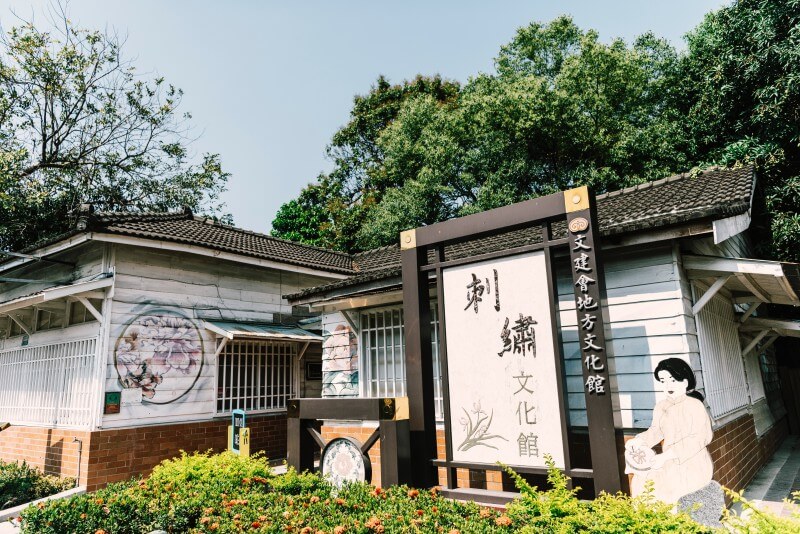
From Modern Infrastructure to Local Landmark: Puzi Waterway
Known locally as the ‘Watercourse Head’, the Puzi Water Tower (朴子水塔) was built in 1933 as a public facility to improve drinking water sanitation and prevent the plague by Dr. Huang Ma-Dian (黃媽典), who had just become the Mayor of Puzi.
The 35-metre-high bell-shaped exterior of the water tower has made it an important landmark in Puzi, and almost all locals hold fond memories of walking around it on dates. Although no longer in use, it is still a representative image of home in the hearts of people from Puzi. (Read also: Five Water Activities in Taiwan that are not What You Think)
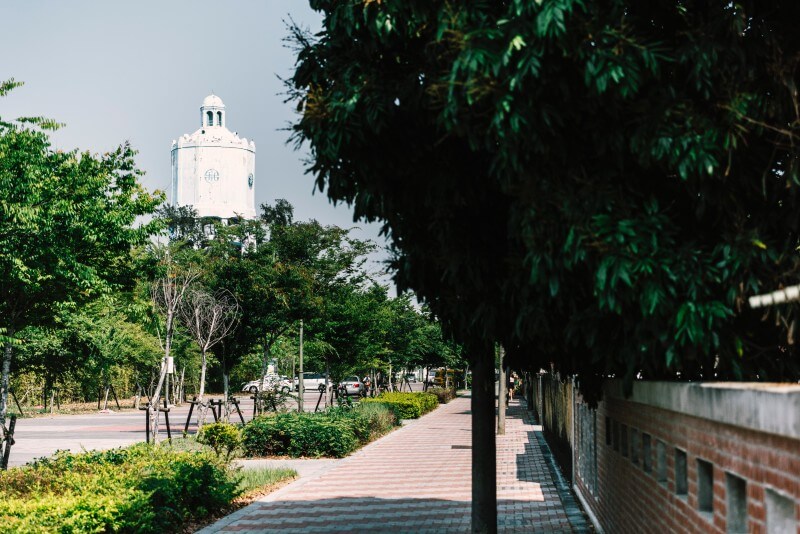
A row of Japanese wooden buildings stands next to the water tower. Formerly the teachers’ dormitory of the Dongshi Agricultural College (東石農業補習學校, now Dongshi High School), it has now being renovated into the “Puzi ShuiDauTou Cultural and Creative Settlement “. “Puzi Stories (朴子故事館)” has also preserved many old photos and artefacts from the area, and functions as an independent bookstore, holding regular talks and events to introduce Puzi’s literary and historical stories and heritage.
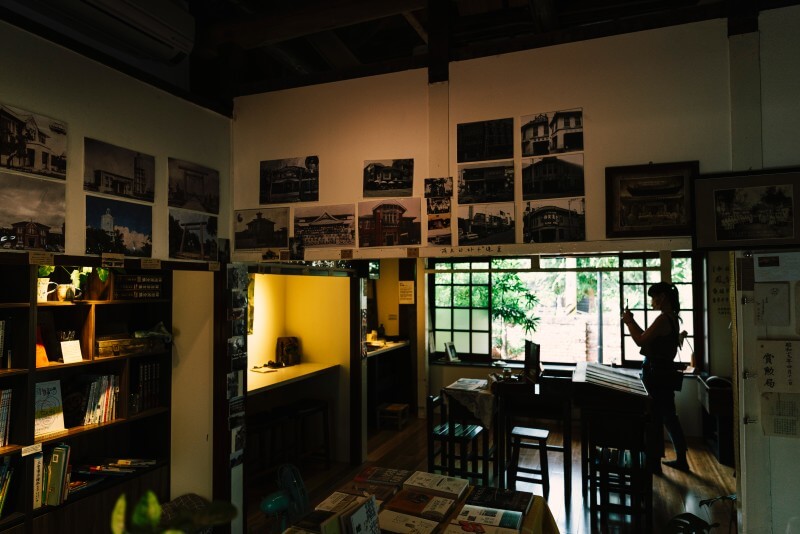
The small town of Puzi in Chiayi, which was born out of the blessing of the sea-goddess Mazu, has grown from a temple under an old Chinese Hackberry Tree into a bustling settlement. Take a trip to Puzi, stroll under the colorful lights of the market and witness the glory of Taiwan’s embroidery industry.
Words by Yining Chen;
Edited by Adam Hopkins;
Photos by Chiu Chia-hua
(This article is reproduced under the permission of MySaiology. Original content can be found at the website of MySaiology.)


